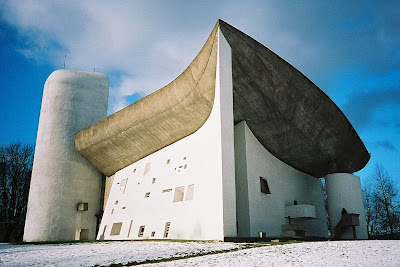
Link to Interactive PDF:
http://rapidshare.com/files/299729366/VitraPosterInteractive.pdf.html















The redesign of Frank Gehry’s Vitra Museum was inspired by Damien Hirst. Frank Gehry had envisioned originally a building in which each separate room and area had a different feeling due to lighting, volume, and area. The original Vitra Museum I felt did not achieve this as the lacklustre white walls left a cold and sterile feeling through-out the entire Museum.
Originally I wanted to touch on this fact by introducing new lighting schemes within each separate room, but as I was doing this it looked messy and all over the place. There seemed to be nothing holding it together.
So, I decided to incorporate one lighting design scheme to change the way you viewed the space.
The only way to incorporate more light into a space is to open the walls up. I like the look of light as it comes in slits and bounces off wall surfaces. This is where the Damien Hirst inspiration came in. His famous animals in which he slices in half to show the working innards come together as a whole seemed to mirror the way Gehry’s sculptural blocks come together as a whole in Vitra.
I felt that the whitewashed walls would contrast well with the newly painted interior walls that playfully show through the slices to allow the viewers to see peeks of how things work inside from the outside world.
My re-envisioned model captures audience attention by allowing them to view the inside from the outside in a new manner, and interact with the building in a new way by allowing them to weave in and out of the building, as well as climb through and on the museum.
One definition of museum includes: A building, place, or institution devoted to the acquisition, conservation, study, exhibition, and educational interpretation of objects having scientific, historical, or artistic value. I believe that my re-interpretation includes the building as one of these objects now. It allows the study of an interpretation of artistic value of the entire building. The museum becomes an experience itself as you get to interact with it as well as interact with what it houses.
It is a shame that you are only able to complete something like this in an interactive world as I believe that being able to touch and feel the concrete and solid building and looking down along the ground and seeing the different shadows spilled across the lawn would be beautiful. With such interesting shapes and sculptural elements to the original building casting unique shadows itself the development of slicing them create a sense of intrigue into how they may cast themselves off in the redevelopment.
 The Dancing Building by Frank Gehry is properly known as the Nationale-Nederlanden Building is located in Prague. Designed and built between 1992-96 in a collaboration between Frank Gehry and Vlado Milunic.
The Dancing Building by Frank Gehry is properly known as the Nationale-Nederlanden Building is located in Prague. Designed and built between 1992-96 in a collaboration between Frank Gehry and Vlado Milunic.
 (seen below) which is in nearby Ronchamp, France. The Zinc rooftops blend in with Nicholas Grimshaw's already present factory on site which features aluminum cladding.
(seen below) which is in nearby Ronchamp, France. The Zinc rooftops blend in with Nicholas Grimshaw's already present factory on site which features aluminum cladding.